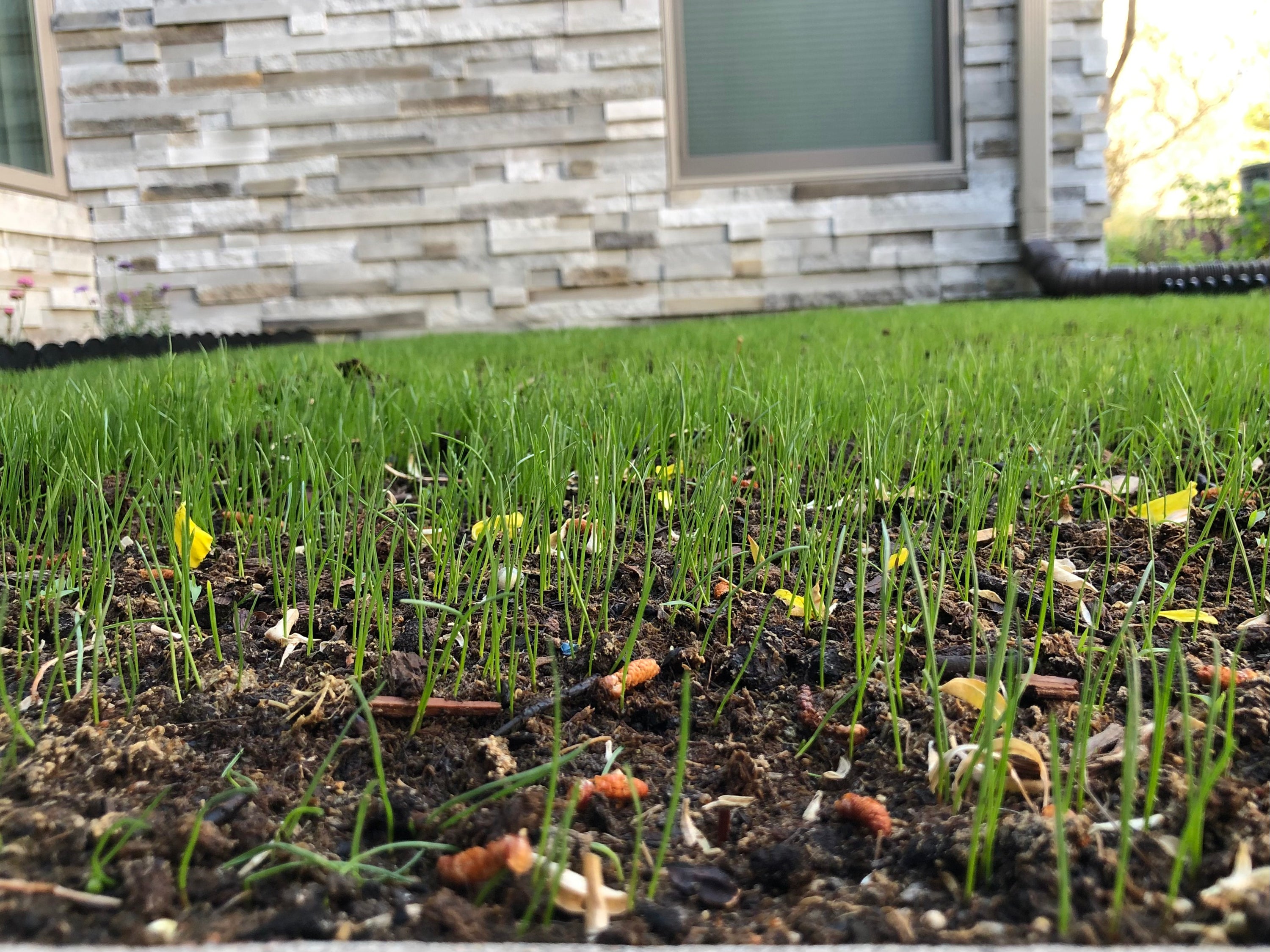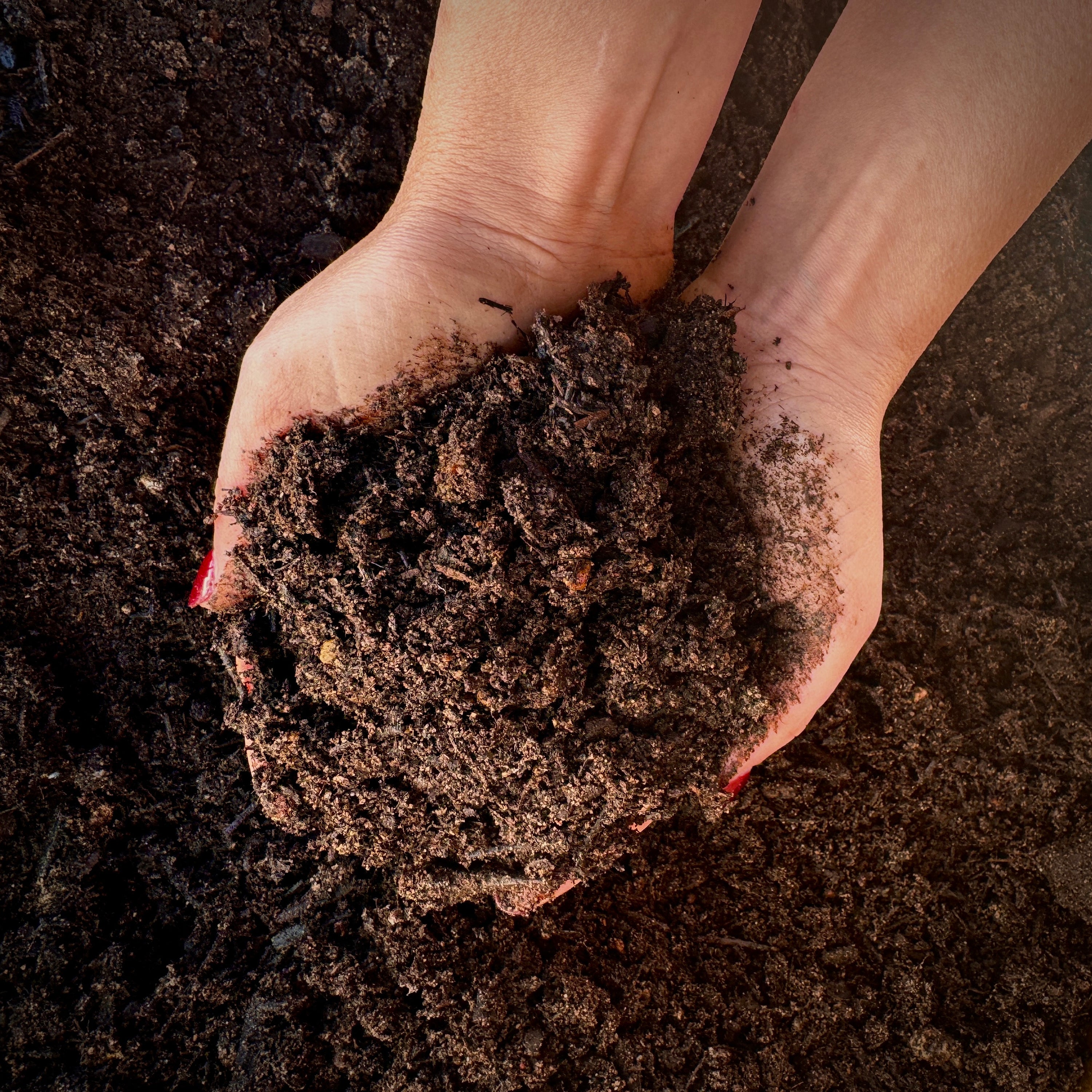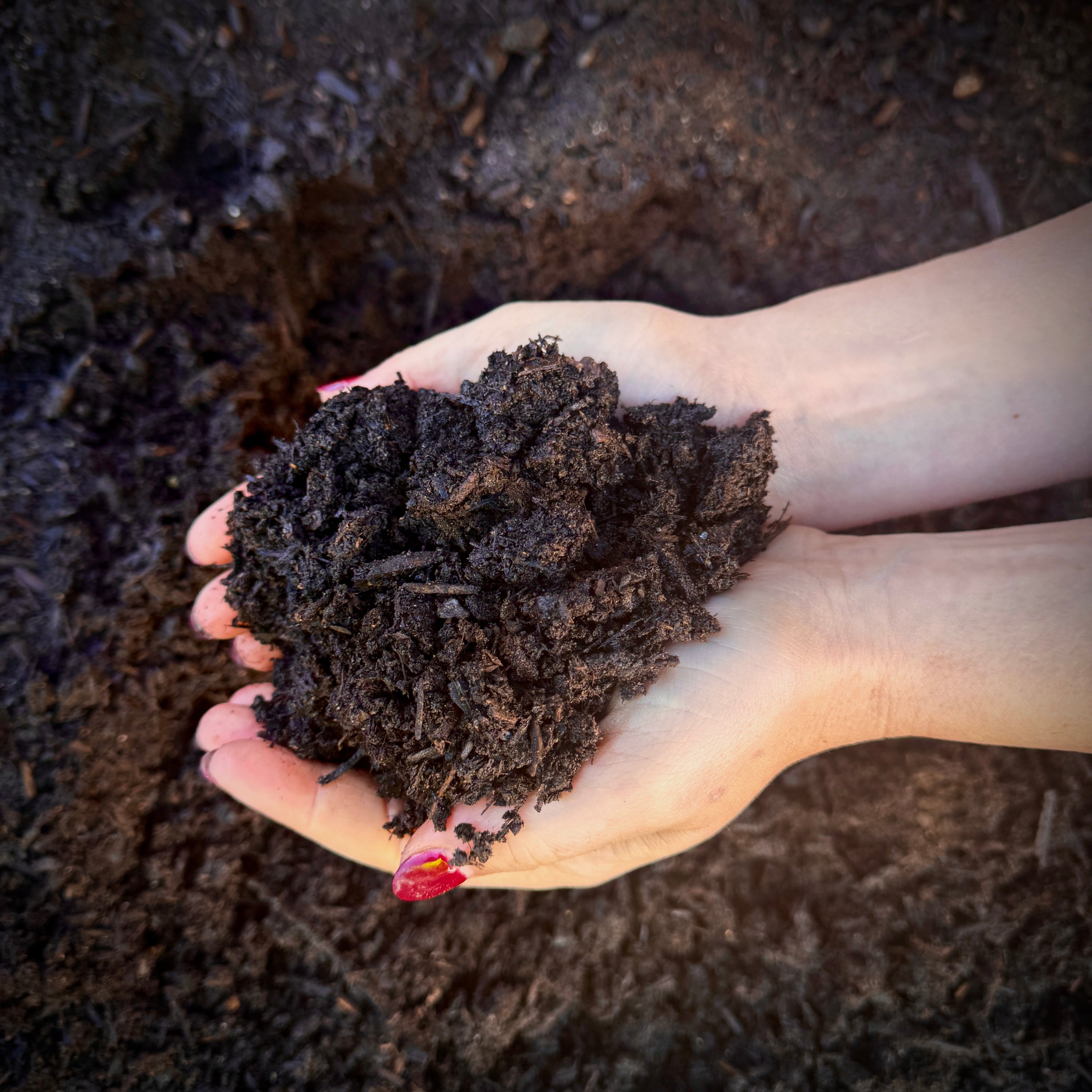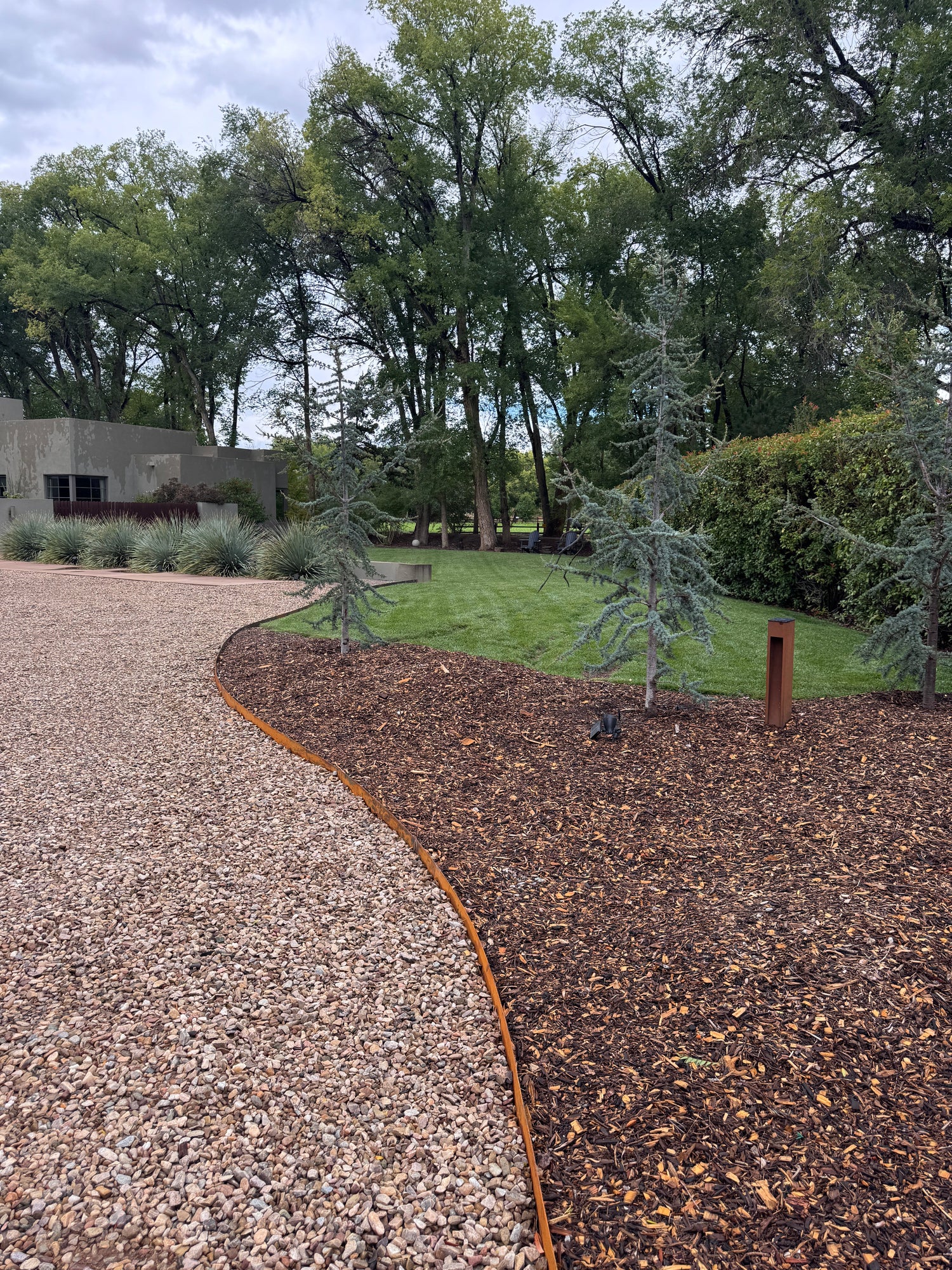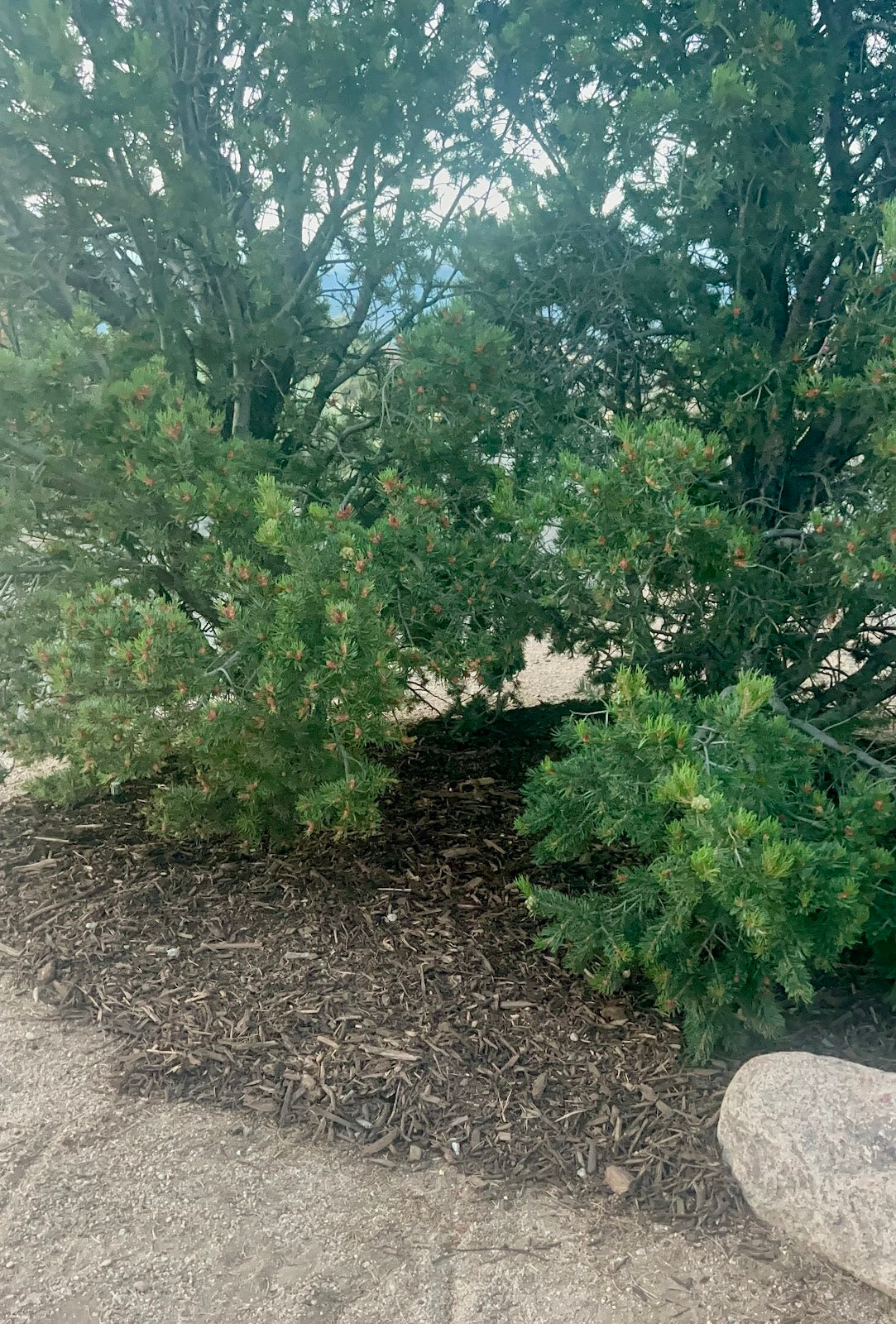Starting a new lawn can feel intimidating but we are here to help! In this guide, we will give you an overview of new lawn vocabulary, what to think about before you start your new lawn and two methods to give your new lawn everything it needs to flourish.
Vocabulary for your New Lawn
Seed or Sod: New lawns are typically started from either seed or from sod. Sod, or turf, is an upper layer of soil with mature grass growing on it.
Soil: Soil contains dirt as well as organic matter and minerals that provide necessary nutrients for plants to grow and thrive
Compost: Compost is a soil amendment or natural fertilizer with the rich organic material needed to create a healthy soil for your plants.
Tilling: Tilling refers to the practice of aerating, or mixing, your soil to add moisture, air and nutrients. “No-till” refers to a growing practice where nutrients like compost and soil are laid down in a planting area without being mixed together
What to Know Before You Start:
- Preparing the soil and planting your new lawn is a time sensitive process. The timeline outlined in our No-Till New Lawn and Till-In Compost New Lawn below are designed to give your new lawn the best chance of survival, especially in hot summer months. Check your calendar before starting this project to make sure you can meet the timeline.
- Square footage and cubic yards are common measurements needed to prepare for your new lawn.
- Calculate square footage by multiplying the approximate length and wide of the area where you want your new lawn.
- Most lawns won’t be perfectly rectangular, so estimate your square footage and add 10% to ensure you aren’t short on supplies for your project.
- Calculate cubic yards by using our handy coverage calculator.
- In Albuquerque, blue grass, rye, fescue or a park blend are recommended.
- Grass seeds and sod should not be walked on for the first 7 days as they are working hard to germinate or root. Make sure you can block off your new lawn from pets, children, etc for the first week after planting.
- Just Sprinklers carries bulk Soilutions products needed for new lawns, and they also sell grass seed and sod! Order online for pickup or delivery of Soilutions products.
Methodology 1: No-Till New Lawn
Step 1: Prepare your growing area with a layer of healthy soil that is 3”-4” deep.
The healthy soil will provide proper aeration and vital nutrients required to support germination of new grass seeds and continued growth in your sod.
- SOILUTIONS RECOMMENDS: Enriched Topsoil or Premium Garden Soil applied on top of your native soil takes the risk (and work) out of amending your native soil. Enriched Topsoil is made with Soilutions Compost and sandy loam. Premium Garden Soil includes additional aeration ingredients pumice and coco coir, along with the necessary nutrient combination for your new lawn.
For best results, spread the soil within 3-4 days of receiving it to ensure it maintains the appropriate moisture level for your new lawn. If you aren’t confident what the appropriate moisture level is, conduct a Squeeze Test.
- Squeeze Test: Squeeze a handful of Enriched Topsoil. If it doesn’t clump together, it is too dry and you should add water. If water drips out of your handful, it is too wet and you should wait a day before spreading. Anywhere in the middle is good to go.
Step 2: Lay down your grass seed or sod 2-3 days after spreading your layer of healthy soil. This gives the soil time to settle into its new environment and for the microbial activity to slow down before introducing your new plants.
Step 3: For the first seven days, water your grass for 90 minutes per day and avoid walking on the planting area
Step 4: Follow normal watering guidance for your particular type of seed or sod and enjoy watching your new lawn grow!

(new grass planted from seed, 14 days after planting)
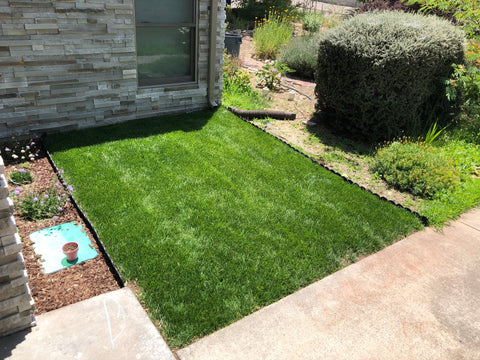
(new grass planted from seed 2 months after planting)
Methodology 2: Till-In Compost New Lawn
Step 1: Till the top 2”-3” of native soil in your growing area. You can till by hand using a hoe, shovel or other gardening tool. You can also rent a tiller from your local hardware store.
Tilling is often hard work made more challenging if your native soil has excessive clay or rock which is common in New Mexico. However, this step is critical in the Yes-Till lawn methodology to create air flow (aeration) and allow for nutrients to be incorporated. Both are needed to allow your new grass to thrive.
Step 2: Once you have tilled the top 2” of native soil, add a 1”-2” layer of compost on top of the soil and mix in.
- SOILUTIONS RECOMMENDS: Soilutions Compost will provide essential nutrients and beneficial microbial life for your new lawn. It also can improve drainage, water retention and neutralize alkalinity of native soil. Many landscapers find that the addition of Soilutions Compost is an all-purpose amendment for new lawns without getting a chemical analysis of your native soil and crafting individualized amendments to treat specific concerns.
Step 3: For the first seven days, water your grass for 90 minutes per day and avoid walking on the planting area
Step 4: Follow normal watering guidance for your particular type of seed or sod and enjoy watching your new lawn grow!


